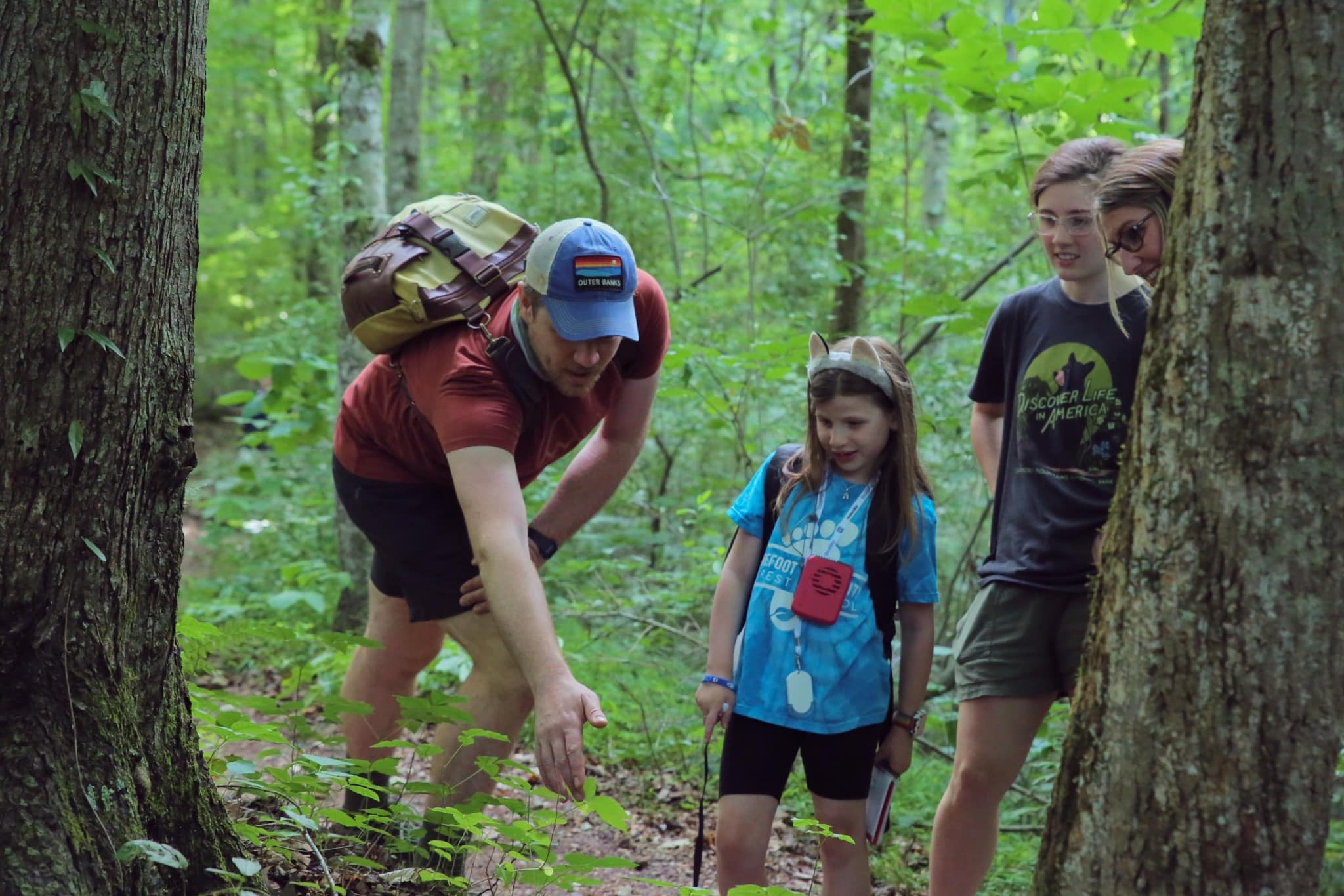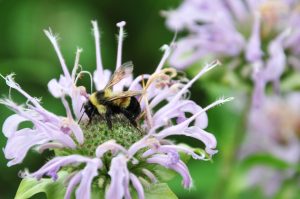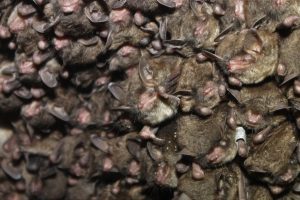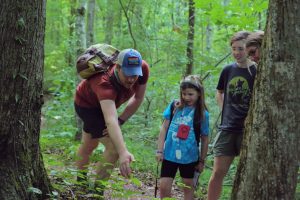
Not that long ago, the rusty-patched bumble bee was a common sight not only in Great Smoky Mountains National Park, but throughout the entire eastern and upper midwestern United States. But the bee’s fate changed quickly—it was put on the federal endangered species list in 2017, and it hasn’t been spotted in the park since 2001.

The rusty-patched bumble bee is one of 4,000 bee species native to North America and 10,432 insect species documented within Great Smoky Mountains National Park. It’s also one of 13 federally threatened or endangered species still listed as existing in the Smokies—and park managers fear it may soon join the list of five federally listed species that no longer survive within the park boundary. The exact cause of its steep decline is unknown, but according to the U.S. Fish and Wildlife Service, an introduced pathogen and pesticide exposure likely played a role, with habitat loss, competition from non-native bees, and climate change continuing to challenge the remaining populations.
“We haven’t seen it in so long that we’re considering it a historic record, and just hold out hope that we’ll find it again, someday,” said Becky Nichols, entomologist for Great Smoky Mountains National Park.
The endangered Indiana bat, gray bat, northern long-eared bat, Carolina northern flying squirrel, Citico darter, Smoky madtom, spruce-fir moss spider, spreading avens and rock gnome lichen join the rusty-patched bumble bee on the park’s list of endangered species. The threatened yellowfin madtom and Virginia spirea—as well as the monarch butterfly, which is proposed for listing as threatened—also occur there. The endangered gray wolf, red wolf, eastern puma, and red-cockaded woodpecker, as well as the threatened spotfin chub, used to be found in the Smokies but no longer are.
Nationwide, 1,669 native species are listed as threatened or endangered under the federal Endangered Species Act. Some of them, like the gray wolf, have been researched extensively—much is known about how their lives fit into the larger ecosystem and what might be lost should they become extinct. Others—like the rusty-patched bumble bee—remain relatively mysterious. But that doesn’t mean they aren’t important.
“We don’t always understand the role that each individual species plays in the environment,” Nichols said. “When we start losing pieces of the puzzle, what other ecosystem functions are we losing? Species interdependency could be affected, pollination services could be lost for a particular plant species—we just never know exactly what the repercussions of something going extinct or being extirpated will be on the rest of the system.”
This month, two days are set aside to recognize the importance of protecting not just imperiled species, but all species with which we share this planet. Today is the International Day for Biodiversity, highlighting the role biodiversity plays in ecological health and human wellbeing. It follows Endangered Species Day, celebrated Friday, May 17, which offered an opportunity to reflect on the importance of conserving and restoring populations of imperiled species around the globe.

The Smokies, with its protected status, large size and plethora of unique habitats—especially high-elevation areas—make the park “important as a haven for threatened and endangered species,” said Will Kuhn, director of science and research for park partner Discover Life in America. Park staff regularly monitor the populations of all the listed species that occur in its boundary and report these results to the U.S. Fish and Wildlife Service, working to ensure that their populations are stable and that they continue to have high-quality habitat to live in.
In some cases, the park’s role goes well beyond monitoring. Currently, staff are working to propagate new specimens of the threatened shrub Virginia spirea, which occurs only in one area of the park. Once they grow strong enough, the young spirea will be transplanted to help strengthen the native population.
In other cases, such as that of the three endangered bat species in the Smokies, the emphasis is on prevention. These bats—and all cave-dwelling bats in North America—are under extreme threat from the fungus that causes white-nose syndrome, with some affected colonies declining as much as 99 percent since white-nose syndrome was first discovered in New York in 2006. Due to this ongoing threat, all of the park’s caves are closed to the general public.
“The fact that the Smokies are protected gives some security to these species, especially the threatened and endangered species that could be suffering from habitat loss or other issues outside of the boundary,” Nichols said. “Hopefully we preserve enough of the habitat inside the park that the species will be able to thrive.”
The park is also a vital reservoir for overall biodiversity. With an abundance of water and wide range of elevations, it’s one of the most biodiverse places on earth—to date, 21,980 unique species have been documented in the Smokies. More than half of these have been added to the list since 1998, when the All Taxa Biodiversity Inventory, a project that Discover Life in America manages in partnership with the park, began its mission to record every single species living within the park boundary.
“We always say, ‘you can’t protect what you don’t know is there,’” said Jaimie Matzko, biodiversity program specialist for DLiA, “but I also think that the more information that we are able to pass on to the resource managers of the park, the better they are able to make decisions about how to deal with some of these endangered species, or species that could become endangered.”

The Smokies’ startling diversity can make that challenging. Neither the park nor its partners have enough people on staff to fully explore all forms of life present across 816 square miles of often extremely rugged terrain. That’s where the Smokies’ more than 12 million annual visitors can help the cause.
“One of the best things people can do to help with biodiversity is help us study it, and help us collect data,” Matzko said.
The advent of the smartphone has made it easier than it’s ever been to aid these scientific efforts. Anybody wandering the Smokies can take photos of what they see and upload those images to the app iNaturalist, where an algorithm aids identification and other users, many of them experts in their field, weigh in to confirm those IDs. The resulting data is used for a variety of research efforts.
Science can be social, too. DLiA conducts monthly bioblitzes, events in which participants spend all or part of a day working with others to catalogue as much life as they can in a given area. The nonprofit also hosts summer interns, who help with data collection and projects related to it.
While national parks like the Smokies are integral to efforts to protect endangered species—and, therefore, preserve biodiversity—they’re not the whole picture. About 80 percent of land in the United States is privately owned, meaning that the actions people take after leaving the national park are potentially even more important than what they do while they’re there. Simple actions like planting native plants, choosing to stop mowing a portion of the yard, and spreading around the seeds of existing native plants can go a long way toward supporting the constellation of species that call any one place home. The results are often apparent “fairly quickly,” Matzko said, offering a “satisfying and inspiring” experience in return.
“At least you know in your corner of the world,” she said, “you’re making a difference.”
Discover Life in America will hold its next bioblitz events 6–10 p.m. Friday, June 28, and 8 a.m. to noon Saturday, June 29, in partnership with the Tennessee Valley Authority at Cherokee Dam Park Picnic Area in Jefferson City, Tennessee. Learn more or register at dlia.org/event/cherokee-dam-bioblitz.
Subscribe to get the latest posts sent to your email.
The Smokies Life website will be unavailable for a few hours due to maintenance on July 9, beginning at 9:30 am Eastern Time.
Thank you for your patience.
The Great Smokies Welcome Center is located on U.S. 321 in Townsend, TN, 2 miles from the west entrance to Great Smoky Mountains National Park. Visitors can get information about things to see and do in and around the national park and shop from a wide selection of books, gifts, and other Smokies merchandise. Daily, weekly, and annual parking tags for the national park are also available.